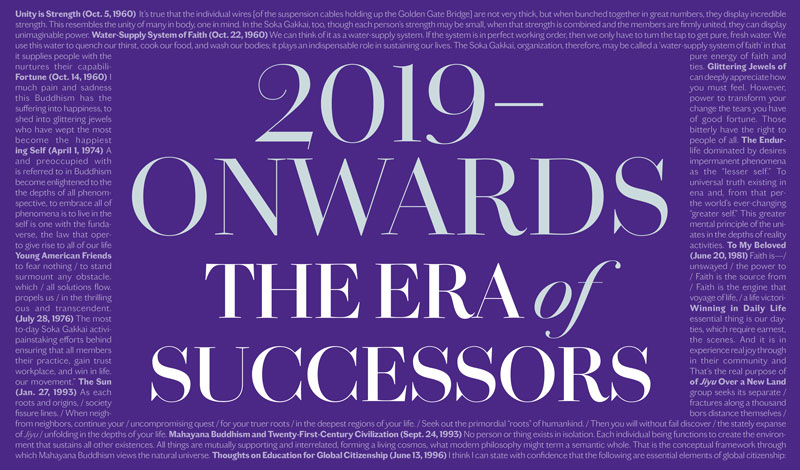To see the actual timeline please click here.
Entering the third decade of the 21st century, Ikeda Sensei spoke of the time’s significance, declaring the next 10 years toward the Soka Gakkai’s centennial “a period of vital importance that will be a turning point for humanity.”[1]
Indeed, unprecedented challenges opened the decade—a global pandemic and worldwide demonstrations sparked by the murder of George Floyd. Both events exposed myriad rivulets of mistrust coursing through American society.
The SGI-USA launched a counter-offensive against the forces of disintegration in society—to restore our essential connections with ourselves and one another. Across the country, SGI-USA members rallied as champions of hope in their respective communities with the spirit to leave no one behind.
In his Feb. 21, 1990, address, “Take the Next Great Step Forward,” Sensei discusses Arthur M. Schlesinger Jr.’s theory of cyclical change—namely, that American society undergoes significant changes every 30 years. The change, according to Schlesinger, is always accompanied by a collective return to founding ideals. Returning to the basics of faith—namely, human revolution based on resolute prayer to the Gohonzon, Buddhist study and caring for others based on a vow—members set in motion a renewed commitment to transforming the land in which they live.
On Nov. 15, 2023, our eternal mentor of kosen-rufu, Daisaku Ikeda, passed away. We have entered an era in which the disciples are tasked with carrying on the mentor’s legacy to accomplish kosen-rufu. Sensei writes in the epilogue of The New Human Revolution: “Without the disciple’s efforts to make it a reality, the mentor’s grand vision will remain an empty dream. The true value of the principles set forth by the mentor are only revealed when they are applied and developed.”[2]
It is through Sensei’s written word that the coming generations must grasp their mentor’s heart, chronicle their own wonderful stories of triumph and bring to life humanity’s dream of lasting peace around the world.
JAN. 1, 2019
The Brilliant Path of Worldwide Kosen-rufu
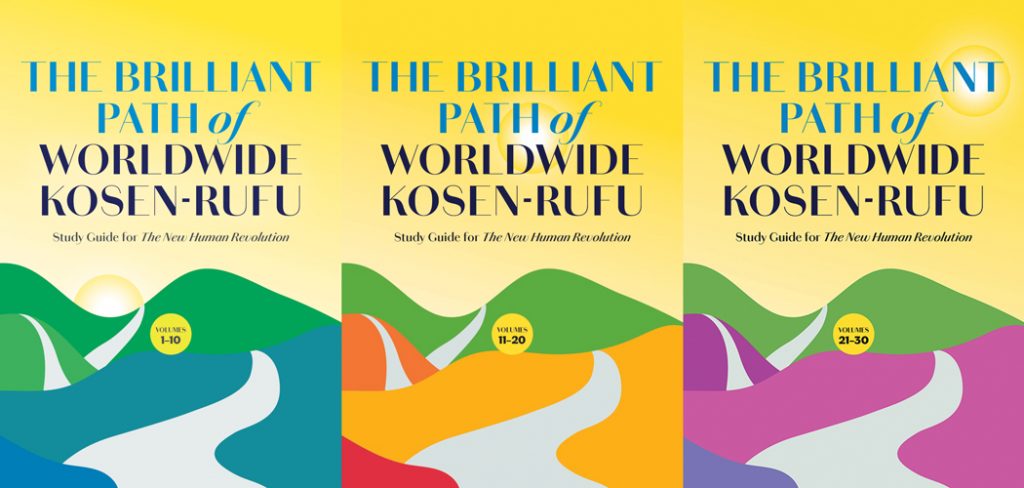
On Aug. 6, 2018, Ikeda Sensei wrote the final installment of his 30-volume work, The New Human Revolution. Speaking of the significance of Sensei’s serialized novel, Soka Gakkai Senior Vice President Hiromasa Ikeda explained that it serves as a point of reference for successive generations of Soka Gakkai members to learn of the history of kosen-rufu, the Soka Gakkai spirit and Sensei’s heart.
With that, on Jan. 1, 2019, the Living Buddhism began running a monthly study guide “The Brilliant Path of Worldwide Kosen-rufu—Learning From The New Human Revolution.” In his opening message to the series, Hiromasa Ikeda said: “The coming age will be defined by how each of us, as a disciple, deepens and puts into practice the spirit of The New Human Revolution. How will we internalize this spirit and accurately hand it on to future generations? It could be said that all the members of the youth division are ‘The New Human Revolution generation’ with a profound mission to fulfill” (January 2019 Living Buddhism, p. 37).
Feb. 2, 2019
Chihuly Sculpture Gifted to SGI-USA Youth

Celebrating the SGI-USA’s great achievement with the 50,000 Lions of Justice Festival on Sept. 23, 2018, Ikeda Sensei gifted a stunning eight-piece glass sculpture by famed artist Dale Chihuly to the youth of America, asking that it be displayed as a symbol of the “shared triumph of mentor and disciple” (Feb. 15, 2019, World Tribune, pp. 6–7). SGI-USA members can view the sculpture as an installation in the Successors Room of the Florida Nature and Culture Center’s Ikeda Hall.
March 11, 2020

After more than 118,000 cases in 114 countries and 4,291 deaths, the WHO declares COVID-19 a pandemic.
April 2020
An Unprecedented Time
In response to the shelter-in-place order that aimed to reduce the rising cases of COVID-19, the SGI-USA halted in-person meetings to contain the virus and safeguard the health and well-being of each person.
In turn, members quickly rallied around the ABC Campaign—Abundant chanting; Buddhist study; and Connecting life-to-life (by phone or videoconferencing)—returning to and strengthening the basic elements of faith. The SGI-USA also distributed hundreds of Zoom accounts to each chapter, enabling members to hold virtual discussion meetings and other activities.
May 26, 2020
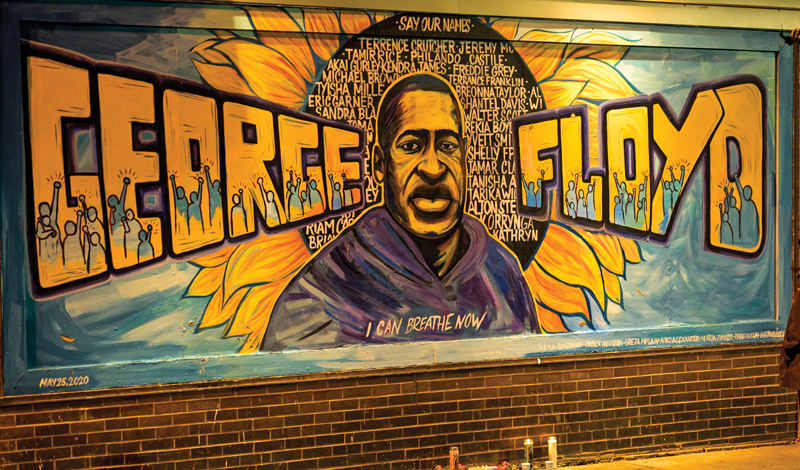
Following the tragic murder of George Floyd, mass demonstrations sweep the nation and many parts of the world.
Oct. 2, 2020
Buddhability Launched

Celebrating the 60th anniversary of Ikeda Sensei’s first overseas trip to the U.S. on Oct. 2, 1960, SGI-USA launched a new digital ecosystem, Buddhability, to introduce Buddhist principles to a new generation of youth in America. The innovative online platform features a website, podcast, newsletter, videos and more spread across multiple social media channels. Since its inception, it has grown to over 1.4 million podcast downloads and 60,000 newsletter subscribers, with many youth guests going on to join the SGI-USA.
Oct. 4, 2020
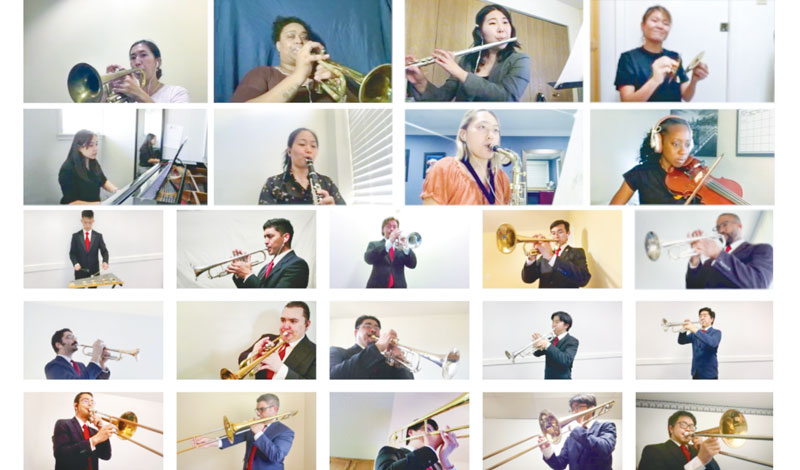
To kick off the virtual meeting commemorating the 60th anniversary of Ikeda Sensei’s first overseas trip to the U.S. on Oct. 2, 1960, the SGI-USA Fife and Drum Corps performed “Youth With a Noble Vow,” and the SGI-USA Brass Band played “Song of Crimson.”
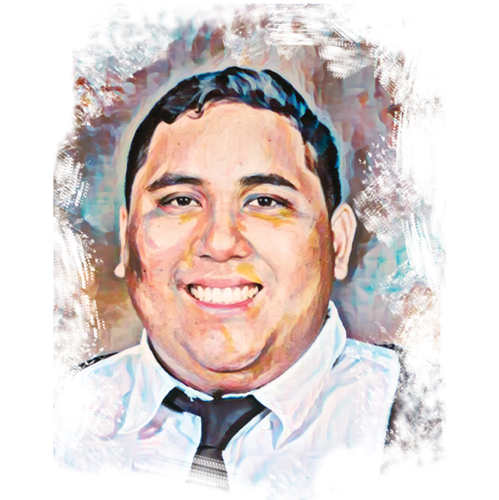
The Power Is Within Me
by Leonard-John Ventura
Tamuning, Guam
I struggled with a feeling of emptiness for years. My religious roots couldn’t fulfill it, and I was searching in all kinds of churches and temples to find something that could help me.
As I was searching, a digital streaming service recommended the SGI-USA podcast “Buddhist Solutions (for Life’s Problems).” I was hooked. That night, I listened for five hours straight—to people’s stories and about Buddhist philosophy.
I immediately looked on social media to get connected with my local SGI community, but this was during the pandemic, and in-person SGI activities had stopped. But I was fortunate to connect with a young men’s leader who met with me over Zoom and connected me to virtual discussion meetings.
The biggest difference between SGI Buddhism and other religions was that we had the power within us to overcome any difficulty. Chanting Nam-myoho-renge-kyo, I had the courage to step out of my comfort zone and speak up for myself.
My work as a high school teacher always challenged me. But rather than complaining, I realized I had an opportunity to touch the lives of many people. Rather than blaming my students for my suffering, I started wondering what was going on in their lives. Some students took notice and even said, “Wow, you changed!”
It was about two years later that the new SGI Guam Ikeda Peace and Culture Center opened—my first time chanting with a group. I’m so happy I found the SGI. I’m still learning about Daisaku Ikeda, but I really respect him. I feel I can still be a disciple of someone even after they’ve passed. So, I’ll continue, deriving inspiration from him, toward victory.
2020
Spreading Hope Virtually
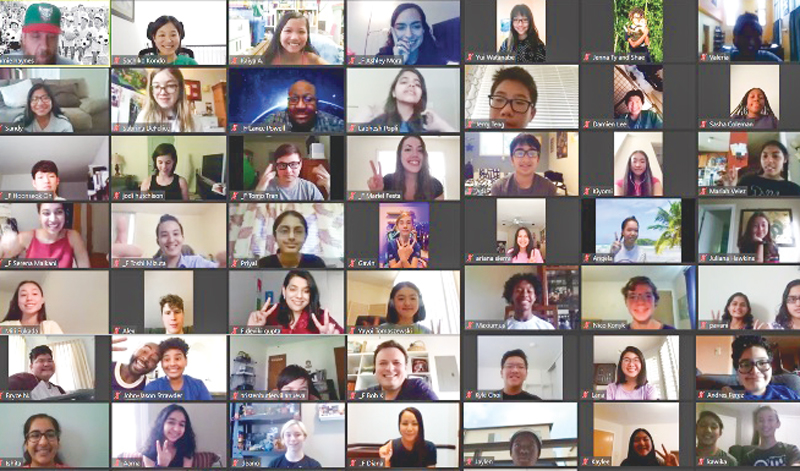
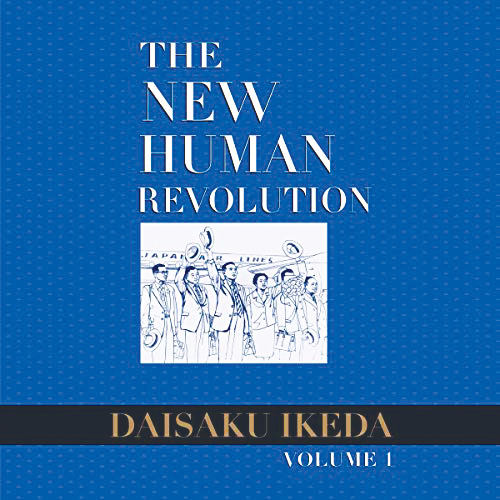
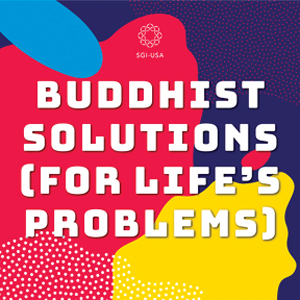
Amid the flurry of events in the world, the SGI-USA combatted the hopelessness and isolation people felt through various platforms such as: the “How Buddhists Create Hope During COVID-19” series on Instagram; release of The New Human Revolution audiobooks; topical episodes on the “Buddhist Solutions (for Life’s Problems)” podcast; a new intro-to-Buddhism video on YouTube; and virtual celebrations of 60 years of kosen-rufu in America. It reflected a time of innovation to give members hope in every way possible.
March 6, 2021
HOPE Champions

To acknowledge the many consistent guests attending meetings, the SGI-USA introduced the “HOPE Champion” award to guests who were chanting consistently, subscribing to the SGI-USA publications, receiving benefit and were willing to share their experience at a local meeting. Although these HOPE Champions practiced for months without the Gohonzon, they went on to receive benefit from practicing Buddhism and introduced their friends to the practice.
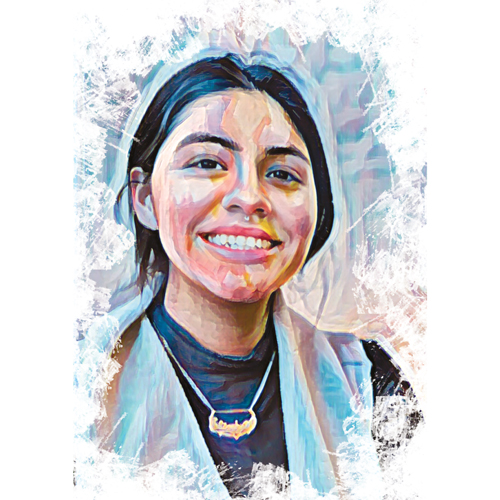
Breaking Through on All Levels
by Elizabeth Barrera
Chicago
Around the time we were coming out of the pandemic shutdown, I was assaulted on a coffee date. It triggered levels of anxiety I’d never known before. Overnight, everything—from getting out of bed, folding laundry to chanting—became impossible.
I couldn’t see a way forward, but I trusted the person who introduced me to Buddhism five years earlier. She had overcome all kinds of hardships, saying, “It’s because I studied Ikeda Sensei’s guidance, engaged in SGI activities and chanted to the Gohonzon that I broke through all that!”
Her support kept me going, and she encouraged me to join the Byakuren Group, the behind-the-scenes training group for the young women’s division. And I repeatedly read the writings of Nichiren Daishonin and Sensei to empower myself in these times.
One day, halfway to the Buddhist center for a shift, I called her in a panic to tell her I was turning around. With her encouragement, I stayed the course, and ended up spending that morning laughing and greeting the members.
I didn’t forget my problems, but I became, for a moment, bigger than them. I left that shift a different person.
I recently accepted responsibility as the Chicago Zone Byakuren leader, something I’d have considered far beyond me a year ago. Without Byakuren, I’d likely have given up my faith and given up on myself.
When I take my problems to each shift, they shrink in size while their meaning in my life grows. I’m overcoming them for something greater than myself alone—for others and for kosen-rufu.
I might have a lot of problems, but by practicing Buddhism, I’m breaking through on levels I never thought would be possible.
2022
Strengthening Byakuren, Soka Group & Gajokai
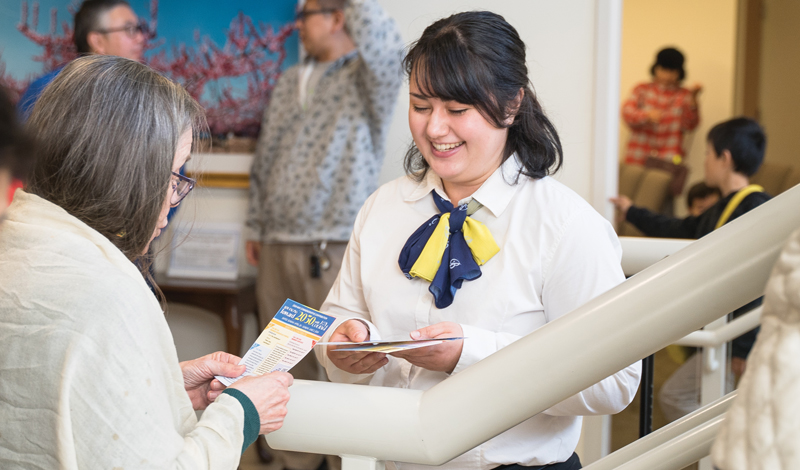
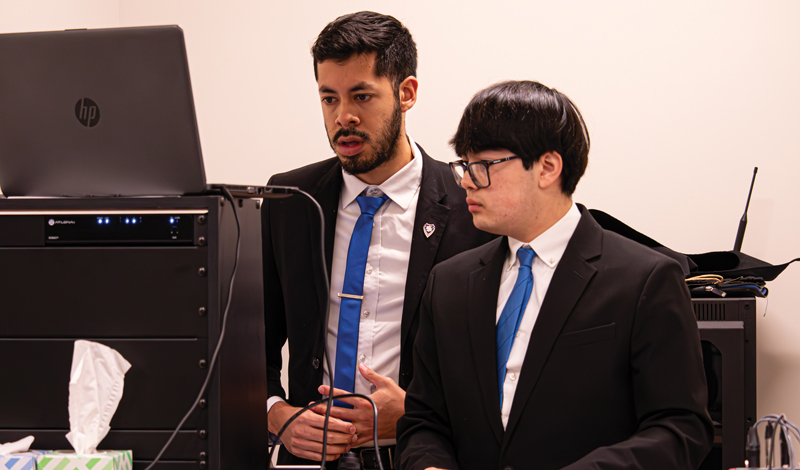
A year into the reopening of SGI-USA Buddhist Centers throughout the country, the Byakuren, Soka Group and Gajokai groups take an even more significant role as the training ground for fostering Soka successors.
As more and more centers were able to reopen with the support of these behind-the-scenes groups, guests who had been practicing Buddhism without the Gohonzon were able to join the SGI-USA.
March 5, 2022
‘Rebuilding the Foundation’
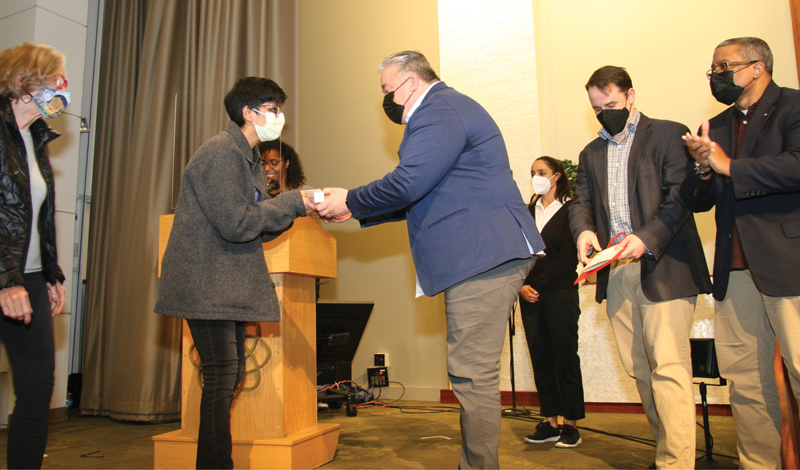
As activities were reopening in phases, the SGI-USA focused its efforts toward 2030: “The District Is the Core” and “Propagation Renaissance,” namely fortifying the foundations of the district, youth division and propagation.
Jan. 21, 2023
Guam Ikeda Peace and Culture Center Opens
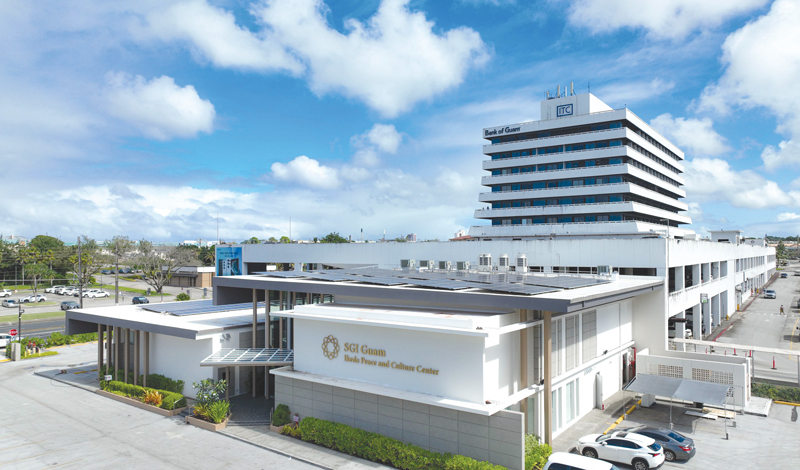
The long-awaited SGI Guam Ikeda Peace and Culture Center opened in a ceremony overflowing with resolve to send fresh waves of peace into the world toward the SGI’s semicentennial in 2025.
Soka Gakkai President Minoru Harada and Soka Gakkai Senior Vice President Yoshiki Tanigawa attended the event on Ikeda Sensei’s behalf. The grand opening served as the reopening of the SGI worldwide following the global pandemic.
In a message to the general meeting, Sensei offered his sincerest congratulations to the members on the center’s opening, saying he felt as though he and Mrs. Ikeda were attending the event alongside them.
“Marking today as a fresh departure toward 2025, the 50th anniversary of the SGI’s founding, please chant the lion’s roar of daimoku. And please bravely and sincerely broaden your dialogues of courage and inspiration, remain on good terms with one another and advance with the unity of many in body, one in mind” (Feb. 10, 2023, World Tribune, p. 5).
Nov. 15, 2023
Ikeda Sensei’s Passing
After 95 years, Ikeda Sensei’s sublime life came to a close on Nov. 15, 2023. Sensei exemplified the limitless courage, compassion and wisdom one can bring forth by living based on the noble spirit of the oneness of mentor and disciple. He stands among the most outstanding leaders in the history of Buddhism, having spread the Buddhist philosophy of respect for the dignity of life across the globe and expanded the Soka Gakkai’s movement for peace to 192 countries and territories.
Toward 2030
A New Era of SGI-USA
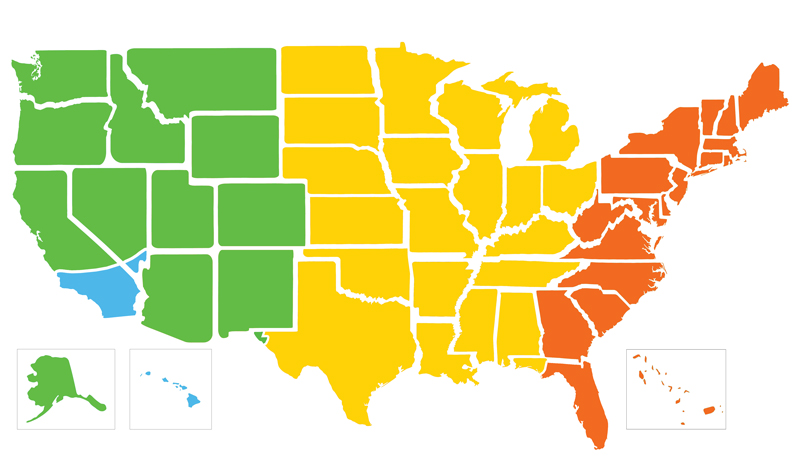
On Sept. 16, 2023, the SGI-USA youth declare their determination to greatly widen the path of kosen-rufu in America in the next five years, culminating in 2028, by gathering 100,000 youth in cities and towns across the country to commemorate Sensei’s 100th birthday.
The year following Ikeda Sensei’s passing, 2024, was named the Year of Fresh Departure for a Youthful Soka Gakkai Worldwide. On Dec. 3, 2023, the SGI-USA announced the formation of a new four-territory structure—East, Central, West and SoCal-Pacific—to better support the membership at the grassroots level. With this new organizational structure and leadership, the SGI-USA launched into 2024 with the determination to carry on their mentor’s legacy.
As the first milestone toward 2030, the SGI-USA youth held March Youth Peace Festivals, where they gathered some 11,000 youth at the local chapter level, rooted in friendship and heart-to-heart connections.
Toward 2030
One SGI With Sensei
At the first SGI Youth Training Course to be held after Ikeda Sensei’s passing, some 260 youth representatives from 60 countries and territories gathered from June 26 to July 2 in Tokyo.
There, Soka Gakkai President Minoru Harada shared that 2024 marked the midpoint of the current set of Seven Bells toward 2050 and was thus a turning point in our efforts to usher in a new era of worldwide kosen-rufu. He encouraged everyone to share in this mission bequeathed by Sensei and set out, working solidly, steadily and patiently, while engaging in dialogue with our mentor in our hearts along the way.
He said: “Our ability to nurture individuals with genuine faith today, even though they never met with Sensei personally, will determine whether great numbers of capable people will emerge at that time, dancing joyfully on the true stage of worldwide kosen-rufu” (Aug. 2, 2024, World Tribune, p. 10).
August 15, 2024, World Tribune, pp. 34–40
You are reading {{ meterCount }} of {{ meterMax }} free premium articles

